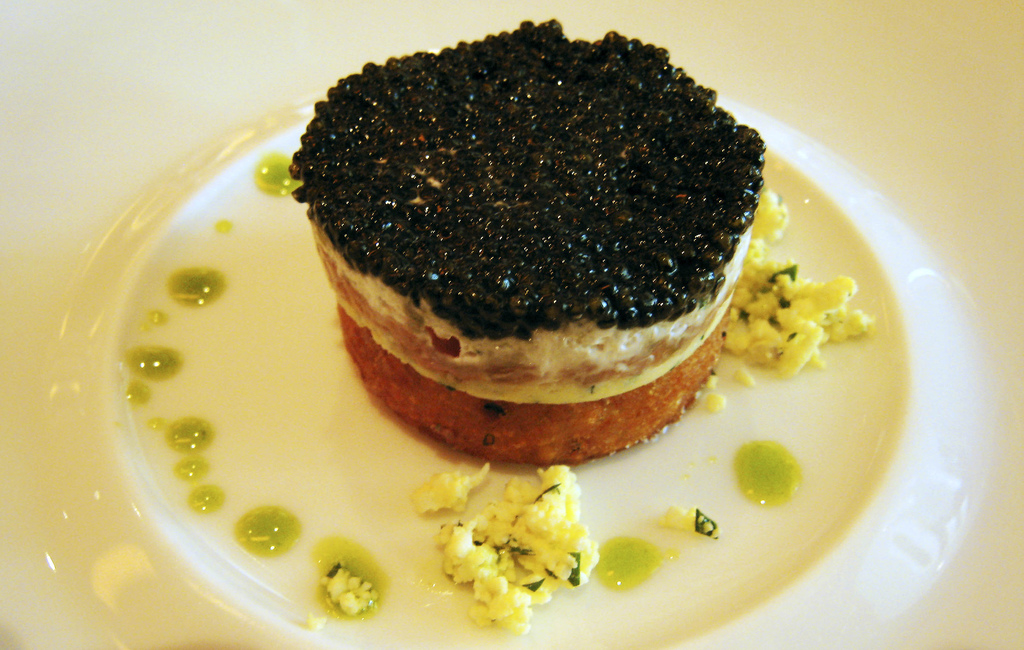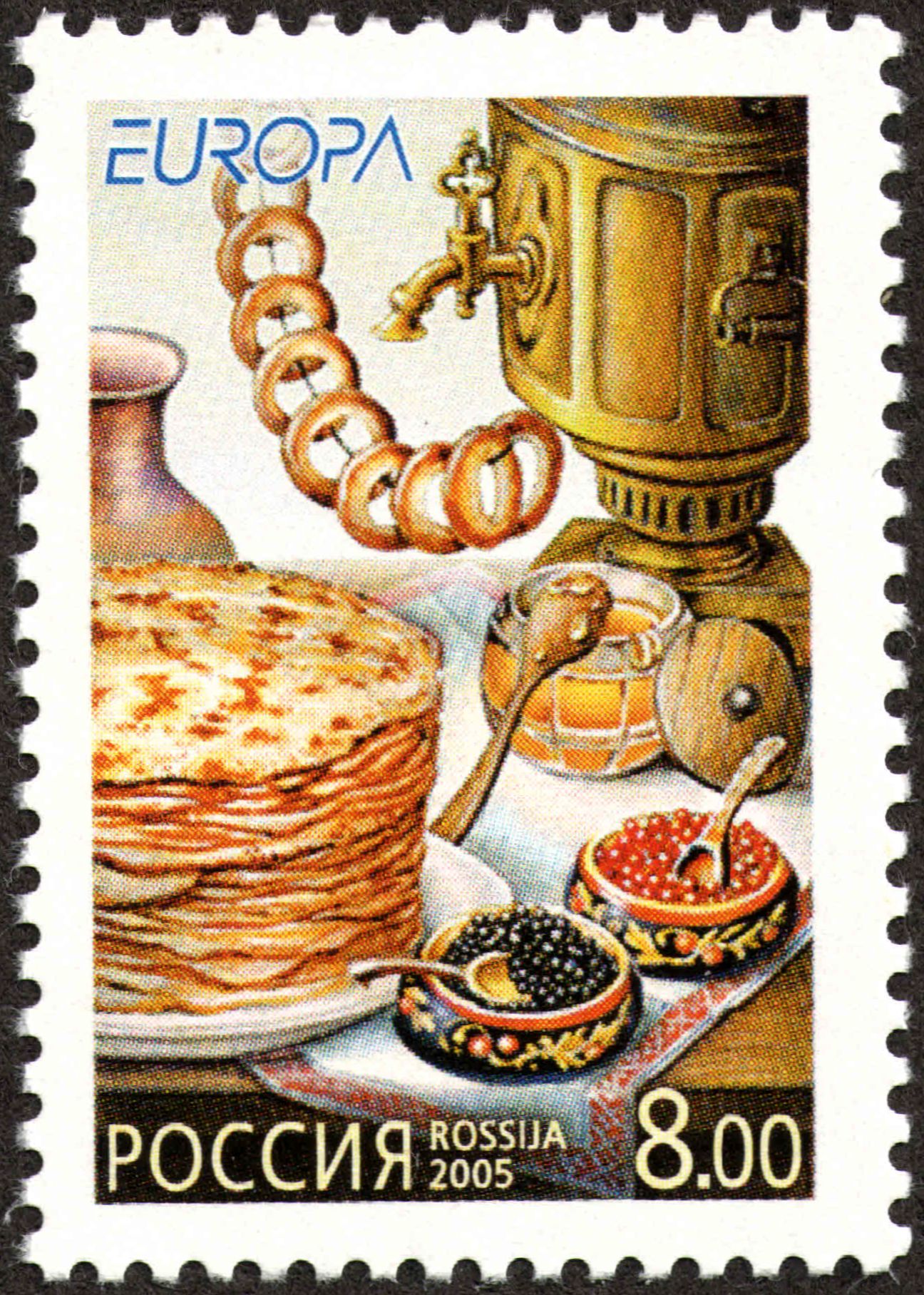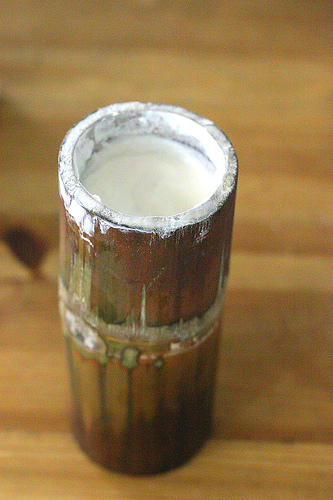|
Varenets
Varenets (russian: варенец, lit=the stewed one), sometimes anglicised as stewler or simmeler, is a fermented milk product that is popular in Russia. Similar to ryazhenka, it is made by adding sour cream (Smetana (dairy product), smetana) to baked milk. Production Varenets is a fermented dairy drink with a caramel taste and creamy color. In the old days milk was baked in a Russian oven and fermented with sour cream. Commercially available cultured varenets is milk that has been pasteurized and homogenized (with 0.5% to 8.9% fat), and then inoculated with a culture of Streptococcus thermophilus to simulate the naturally occurring bacteria in the old-fashioned product. See also * List of dairy products * List of Russian dishes * List of yogurt-based dishes and beverages This is a list of yogurt-based dishes and beverages. Yogurt is a food produced by bacterial fermentation of milk. The bacteria used to make yogurt are known as "yogurt cultures". Fermentation of lactos ... [...More Info...] [...Related Items...] OR: [Wikipedia] [Google] [Baidu] |
List Of Dairy Products
This is a list of dairy products. A dairy product is food produced from the milk of mammals. A production plant for the processing of milk is called a dairy or a dairy factory. Dairy farming is a class of agriculture, agricultural, or an animal husbandry, enterprise, for long-term production of milk, usually from dairy cows but also from goat milk, goats, sheep milk, sheep and camel milk, camels, which may be either processed on-site or transported to a dairy factory for processing and eventual retail sale. A B C D E F G H }, it, latte fieno) is dairy milk produced from animals that have mainly been fed fresh grass and (dry) hay, rather than fermented fodder. The term hay milk is registered as a Traditional Speciality Guaranteed in the UK and the European Union. I J K L M P Q R S T U V W Y Z Unsorted * Crema (dairy product) See also * List of cheeses * List of cheesemakers * List of countries by milk consump ... [...More Info...] [...Related Items...] OR: [Wikipedia] [Google] [Baidu] |
Ryazhenka
Ryazhenka or ryazhanka (Russian: ряженка; uk, ряжанка) is a traditional fermented milk product in Belarus, Ukraine and Russia. [] It is made from baked milk by lactic acid fermentation.ГОСТ 31455-2012 Ряженка. Технические условия (International State Standard 31455-2012. ''Ryazhenka. Specifications''; in Russian) Origin and etymology Russian and Soviet sources call it '' Little-Russian ryazhenka'', [] Reprinted in This milk product is called (, 'Little Russian ') in this book, with (, Little Russia) being at that time a common geographical t ...[...More Info...] [...Related Items...] OR: [Wikipedia] [Google] [Baidu] |
List Of Russian Dishes
This is a list of notable dishes found in Russian cuisine. Russian cuisine is a collection of the different cooking traditions of the Russian Empire. The cuisine is diverse, with Northeast European/Baltic, Caucasian, Central Asian, Siberian, East Asian and Middle Eastern influences. Russian cuisine derives its varied character from the vast and multi-ethnic expanse of Russia. Russian dishes Zakuski Soups Salads Meat dishes Pancakes Bread Pirogi (pies) Sauces Desserts Beverages Non-alcoholic drinks Alcoholic drinks See also * Khrushchev dough * Mikoyan cutlet * List of Russian desserts * List of Russian restaurants * Russian candy Russian candy ( fi, kinuski; russian: ки́нуски ''kinuski'') is a very sweet toffee-like dessert made by carefully heating equal amounts of milk or cream and sugar. It is a traditional dessert sauce in Nordic countries. Karl Fazer broug ... References Bibliography * {{DEFAULTSORT:Russian Dishes Lists of ... [...More Info...] [...Related Items...] OR: [Wikipedia] [Google] [Baidu] |
Russia
Russia (, , ), or the Russian Federation, is a List of transcontinental countries, transcontinental country spanning Eastern Europe and North Asia, Northern Asia. It is the List of countries and dependencies by area, largest country in the world, with its internationally recognised territory covering , and encompassing one-eighth of Earth's inhabitable landmass. Russia extends across Time in Russia, eleven time zones and shares Borders of Russia, land boundaries with fourteen countries, more than List of countries and territories by land borders, any other country but China. It is the List of countries and dependencies by population, world's ninth-most populous country and List of European countries by population, Europe's most populous country, with a population of 146 million people. The country's capital and List of cities and towns in Russia by population, largest city is Moscow, the List of European cities by population within city limits, largest city entirely within E ... [...More Info...] [...Related Items...] OR: [Wikipedia] [Google] [Baidu] |
Streptococcus Thermophilus
''Streptococcus thermophilus'' also known as ''Streptococcus salivarius ''subsp.'' thermophilus'' is a gram-positive bacterium, and a fermentative facultative anaerobe, of the '' viridans'' group. It tests negative for cytochrome, oxidase, and catalase, and positive for alpha-hemolytic activity. It is non-motile and does not form endospores. ''S. thermophilus'' is fimbriated. It is also classified as a lactic acid bacterium. ''S. thermophilus'' is found in fermented milk products and is generally used in the production of yogurt, alongside ''Lactobacillus delbrueckii'' subsp. ''bulgaricus''. The two species are synergistic, and ''S. thermophilus'' probably provides ''L. d. bulgaricus'' with folic acid and formic acid, which it uses for purine synthesis. ''S. thermophilus'' has an optimal growth temperature range of , while ''L. d. bulgaricus'' has an optimal range of . Classification At least 26 strains of ''S. thermophilus'' have been identified and had their genomes s ... [...More Info...] [...Related Items...] OR: [Wikipedia] [Google] [Baidu] |
Russian Drinks
Russian(s) refers to anything related to Russia, including: *Russians (, ''russkiye''), an ethnic group of the East Slavic peoples, primarily living in Russia and neighboring countries *Rossiyane (), Russian language term for all citizens and people of Russia, regardless of ethnicity *Russophone, Russian-speaking person (, ''russkogovoryashchy'', ''russkoyazychny'') * Russian language, the most widely spoken of the Slavic languages * Russian alphabet * Russian cuisine *Russian culture *Russian studies Russian may also refer to: *Russian dressing *''The Russians'', a book by Hedrick Smith *Russian (comics), fictional Marvel Comics supervillain from ''The Punisher'' series *Russian (solitaire), a card game * "Russians" (song), from the album ''The Dream of the Blue Turtles'' by Sting *"Russian", from the album ''Tubular Bells 2003'' by Mike Oldfield *"Russian", from the album '' '' by Caravan Palace *Nik Russian, the perpetrator of a con committed in 2002 *The South African name for ... [...More Info...] [...Related Items...] OR: [Wikipedia] [Google] [Baidu] |
Russian Cuisine
Russian cuisine is a collection of the different dishes and cooking traditions of the Russian people as well as a list of culinary products popular in Russia, with most names being known since pre-Soviet times, coming from all kinds of social circles. History The history of Russian cuisine was divided in four groups: Old Russian cuisine (ninth to sixteenth century), Old Moscow cuisine (seventeenth century), the cuisine that existed during the ruling of Peter and Catherine the Great (eighteenth century), and finally Petersburg cuisine, which took place from the end of the eighteenth century to the 1860s. In the Old Russian period, the main food groups were bread, lots of grains, and lots of foods that contained starch. Women baked pies with lots of different fillings, such as mushrooms or berries. During gatherings, a loaf of bread and salt was always present. Kasha, such as buckwheat, oats, etc.were represented as wellbeing to the household. Lots of Russians used honey and ... [...More Info...] [...Related Items...] OR: [Wikipedia] [Google] [Baidu] |
Fermented Dairy Products
Fermented milk products or fermented dairy products, also known as cultured dairy foods, cultured dairy products, or cultured milk products, are dairy foods that have been fermented with lactic acid bacteria such as ''Lactobacillus'', ''Lactococcus'', and ''Leuconostoc''. The fermentation process increases the shelf life of the product while enhancing its taste and improving the digestibility of its milk. There is evidence that fermented milk products have been produced since around 10,000 BC. A range of different Lactobacilli strains has been grown in laboratories allowing for many cultured milk products with different flavors and characteristics. Products Many different types of cultured milk products can be found around the world including milk, cheese, yogurt, other cultured dairy foods, ice cream and more. Soured milk Soured cream Comparison chart * '' Streptococcus lactis'' has been renamed to ''Lactococcus lactis'' subsp. ''lactis'' See also * List of da ... [...More Info...] [...Related Items...] OR: [Wikipedia] [Google] [Baidu] |
List Of Yogurt-based Dishes And Beverages
This is a list of yogurt-based dishes and beverages. Yogurt is a food produced by bacterial fermentation of milk. The bacteria used to make yogurt are known as "yogurt cultures". Fermentation of lactose by these bacteria produces lactic acid, which acts on milk protein to give yogurt its texture and its characteristic tang. Worldwide, cow's milk, the protein of which is mainly casein, is most commonly used to make yogurt. Milk from water buffalo, goats, ewes, mares, camels, and yaks is also used to produce yogurt in various parts of the world. Dishes * Churri – a spicy Indian side dish * Çılbır – Turkish egg dish * Jameed – Jordanian yogurt strained cheese * * Labanie * * * Soups * Ash-e doogh – Iranian Azerbaijani thick yogurt soup * Cacık – cold yogurt soup from Turkey * Dovga – Azeribijani yogurt soup * Tarator – Bulgarian cold yogurt soup with cucumbers and garlic * Toyga soup – Turkish yogurt soup * Shakriya – Levantine stew with la ... [...More Info...] [...Related Items...] OR: [Wikipedia] [Google] [Baidu] |
Homogenization (chemistry)
Homogenization or homogenisation is any of several processes used to make a mixture of two mutually non-soluble liquids the same throughout. This is achieved by turning one of the liquids into a state consisting of extremely small particles distributed uniformly throughout the other liquid. A typical example is the homogenization of milk, wherein the milk fat globules are reduced in size and dispersed uniformly through the rest of the milk. Definition Homogenization (from "homogeneous;" Greek, ''homogenes'': ''homos,'' same + ''genos,'' kind) is the process of converting two immiscible liquids (i.e. liquids that are not soluble, in all proportions, one in another) into an emulsion (Mixture of two or more liquids that are generally immiscible). Sometimes two types of homogenization are distinguished: primary homogenization, when the emulsion is created directly from separate liquids; and secondary homogenization, when the emulsion is created by the reduction in size of droplets ... [...More Info...] [...Related Items...] OR: [Wikipedia] [Google] [Baidu] |
Inoculation
Inoculation is the act of implanting a pathogen or other microorganism. It may refer to methods of artificially inducing immunity against various infectious diseases, or it may be used to describe the spreading of disease, as in "self-inoculation," the spreading of disease from one part of the body to another, or even to the spreading of bacteria in a Petri dish for culturing purposes. The terms "inoculation", "vaccination", and "immunization" are often used synonymously, but there are some important differences among them. Inoculation is the act of implanting a disease inside a person or animal, vaccination is the act of implanting or giving someone a vaccine specifically, and immunization is what happens to the immune system as a result. Terminology Until the early 1800s inoculation referred only to variolation (from the Latin word ''variola'' = smallpox), the predecessor to the smallpox vaccine. The smallpox vaccine, introduced by Edward Jenner in 1796, was called cowpox inoc ... [...More Info...] [...Related Items...] OR: [Wikipedia] [Google] [Baidu] |
Milk
Milk is a white liquid food produced by the mammary glands of mammals. It is the primary source of nutrition for young mammals (including breastfed human infants) before they are able to digestion, digest solid food. Immune factors and immune-modulating components in milk contribute to milk immunity. Early-lactation milk, which is called colostrum, contains antibody, antibodies that strengthen the immune system, and thus reduces the risk of many diseases. Milk contains many nutrients, including protein and lactose. As an agricultural product, dairy milk is Milking, collected from farm animals. In 2011, Dairy farming, dairy farms produced around of milk from 260 million dairy cows. India is the world's largest producer of milk and the leading exporter of skimmed milk powder, but it exports few other milk products. Because there is an ever-increasing demand for dairy products within India, it could eventually become a net importer of dairy products. New Zealand, Germany and the ... [...More Info...] [...Related Items...] OR: [Wikipedia] [Google] [Baidu] |





.jpg)